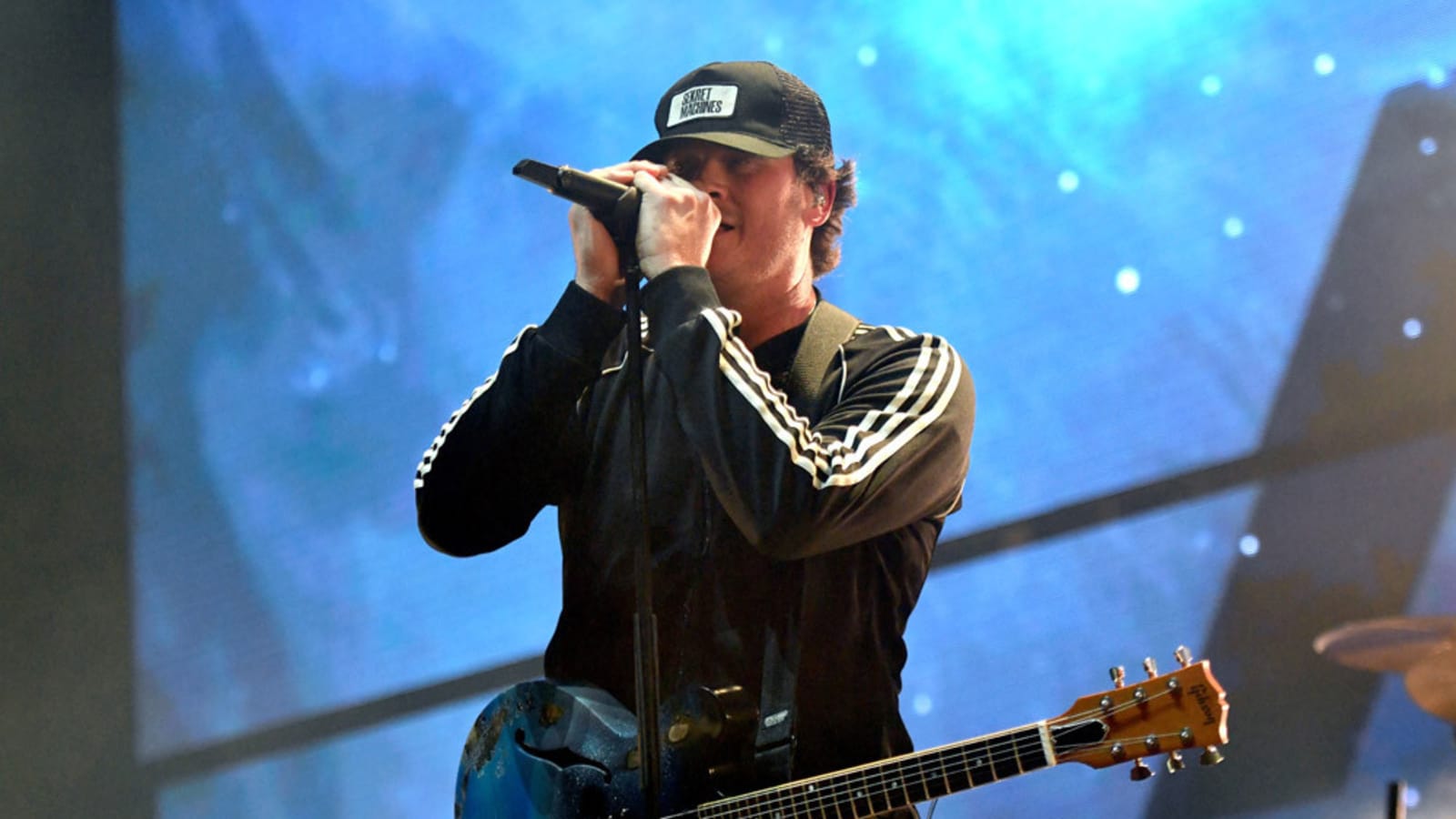
Blink-182 could be set to hit the road in spring.
Co-frontman Tom DeLonge reunited with co-vocalist and bassist Mark Hoppus and drummer Travis Barker for a mammoth world tour in support of their 2023 album ‘One More Time…’, which wrapped in November 2024, and it looks like the pop punk veterans could be planning some more concerts ahead of their headline set at When We Were Young Festival in Las Vegas on October 18.
Tom captioned a snap from one of their shows on Instagram on Monday (06.01.25): "@blink182 should we play some spring break shows just for the f*** of it? We are board and want to playyyyy - we miss you f****** (sic)"
Last year's album marked the group's first studio project together with the original lineup in more than a decade, with Alkaline Trio's Matt Skiba replacing Tom in 2015.
The band - who headlined the UK’s Reading and Leeds festivals last summer - reunited seven years later, while Tom previously revealed how Mark's cancer diagnosis helped mend their friendship and inspire him to rejoin.
He said: "I remember telling my wife, ‘I don’t think I’m ever going to play music again, I don’t think I’m ever gonna tour again.'
"Until Mark told me he was sick, and then I was like, that’s the only thing I wanted to do."
Mark previously revealed the band are in a much “better” place personally than ever before.
He said of the trio’s relationship: "It's actually better than it used to be.
"There was no agenda (when they met up). There were no lingering grudges. It felt very back to what it should be: three friends sitting in a room."
He added: "I keep writing music, and I'm open to whatever the next phase of Blink is. I'm hopeful for the future. I'm just damn glad to be here."
Before 'One More Time...', the trio's last LP together was 2011's 'Neighborhoods'.
More must-reads:
- Laugh tracks: 18 of the funniest songs in rock n roll history
- 25 iconic songs that were made specifically for a movie
- The 20 cheesiest music videos of all time
- 20 sad songs that are guaranteed to make you cry
- Every food & drink mentioned by The Beatles in songs
Breaking News
Trending in Entertainment
Customize Your Newsletter
 +
+
Get the latest news and rumors, customized to your favorite sports and teams. Emailed daily. Always free!








